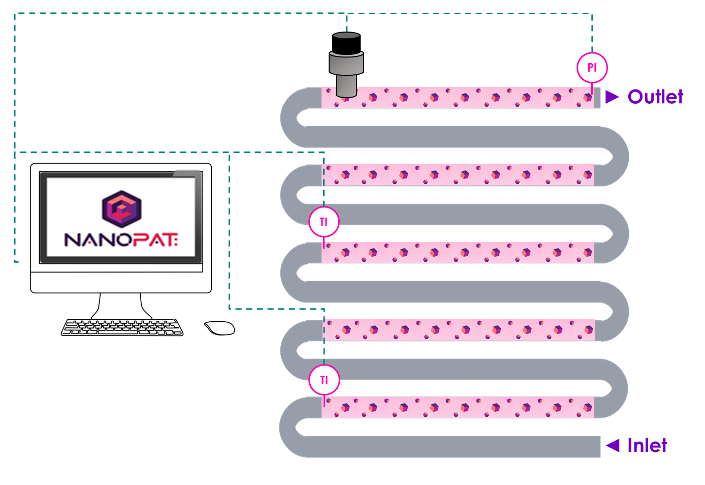Zeolite (Partner Lead: ARKEMA)
Continuous inline characterization for the manufacturing of zeolites in batch and continuous systems.
Zeolites are crystalline aluminosilicates composed of SiO4 and AlO4 tetrahedral structures, assembled to form 3D porous materials. They are synthesized by hydrothermal methods, in which aluminate and silicate solutions are mixed to prepare a “synthesis gel” and then submitted to an induction period (aging), while nuclei formation occurs, before being heated to relatively high temperatures for crystal growth. This process is carried out in closed vessels or in a continuous reactor between 60 and 100°C under atmospheric pressure or even at temperatures above the boiling point, if the reactor can be pressurized. It takes variable times to complete crystallization, depending on the recipes and on the operating conditions.
The targeted crystallinity and crystal size of the zeolite are obtained if the process conditions are well controlled. The continuous tracking of the particle size and particle size distribution during the crystallization will help to properly tune the process conditions and the residence time, in order to produce small submicronic crystals and to minimize aggregates. Furthermore, real-time measurements will be much quicker and more efficient than the usual offline technologies (SEM, XRD), which require time-consuming sample preparation and analysis (few hours to days).

Figure 1: Continuous monitoring of zeolite synthesis process by PAT approach
In this study case, ZHAW will be in charge of the development of the photon density wave spectroscopy (PDWS) technique in lab scale for different zeolite model synthesis provided by ARKEMA. The design will then be implemented and validated at pilot scale by ARKEMA (40 L batch or continuous reactors).
The capability of continuously tracking crystallinity and crystal size via NanoPAT innovative nano-monitoring techniques will be of utmost importance to allow real-time adjustments of process conditions and residence time, as well as for substituting currently used time-consuming offline technologies (XRD, SEM).